What is an AV rack and why use one in a home cinema?
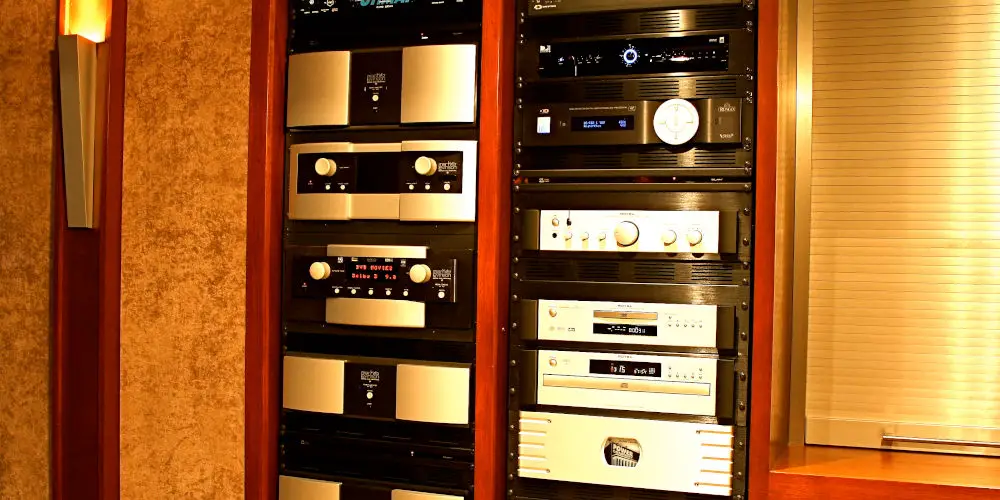
If you spend hours researching home cinema rooms, you’ll likely see all of the AV gear tucked neatly in a corner. But what is an AV rack? These black metal frames hold most of the gear needed to operate your cinema set up.
They are also popular with high-end home automation systems, which typically use a ton of gear to make the system work. Of course, that’s a whole other story.
If you’re new to rack gear or simply fed up with having a load of gear being visible, you need an AV rack. The best thing about AV racks is that they are customizable to fit your needs and slot into your existing home cinema furniture.
Choosing the right racks and configuring them to match your needs ensures that all of your audio/visual equipment operates reliably and efficiently. An AV rack also ensures cable runs are tidy and easy to identify. There’s no need to have an unruly pile of wires!
In this article, you’ll learn what is an AV rack and why you might want to use one in your home cinema room.
What is an AV rack?
Contrary to popularly opinion, you can’t simply plonk electrics down anywhere. They need to be housed in the right environment to ensure they work effectively, are protected and can last longer.
The easiest way to protect the AV gear in your home cinema room is to buy an AV rack. They use a standardised frame size that correctly houses and mounts a variety of electronic equipment modules.
A rack system also makes it easy to organise components into the small possible space, while still allowing you to change units with ease. Also, using a rack system improves power protection, cooling, and cable management.
Do they come in a typical size?
There is a standard rack width of 19 inches. Most electronics are built to fit this width. Some devices are half this width, meaning you can fit two devices on a single shelf.
There is also a standard rack height, called a rack unit (abbreviated as U), which is 1.75 inches tall. AV racks are available in a range of sizes from 2U, up to 45U, depending on your requirements.
As a frame, you’ll either want to secure equipment using screws or mount devices on shelves. It’s worth buying a rack that’s a few U over what you need, just in case you want to add to your set up or move things around.
You can place your AV rack anywhere within the room. For some, it’s at the back of the room. Others will place it at the front. Some will even build a large cupboard into their home cinema room to store their racks. Out of sight, out of mind. Well, that’s the idea!
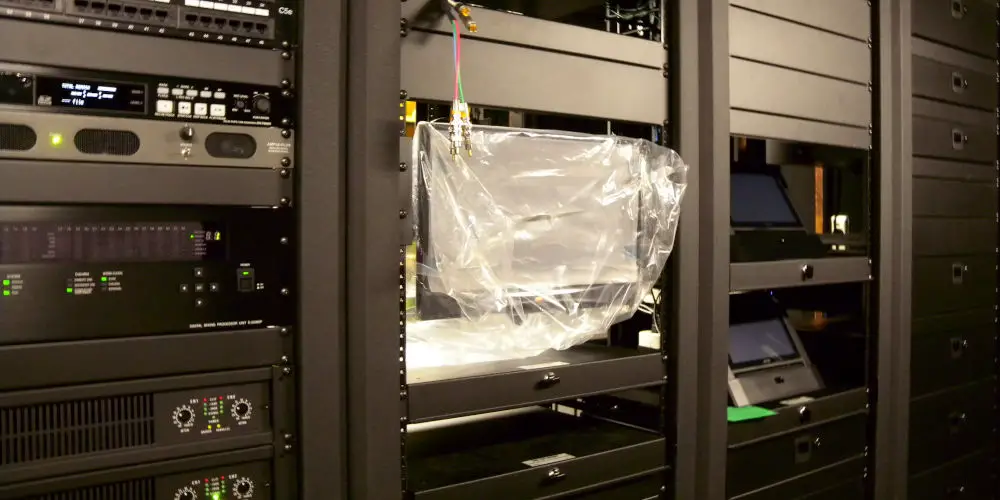
Wait! Do I really need a rack?
While you can get away without a rack if you only have a few pieces of equipment, such as an AV receiver and Blu-ray player or maybe a Kaleidescape unit, there are several reasons why you should use an AV rack.
What is it like without an AV rack?
- There would be no way to organize your hardware or coordinate cabling
- It gives you no way to structure the signal flow of systems
- With no AV rack, it’s more difficult to perform the multitude of other often forgotten but essential tasks
- There’s a lack of security, cooling, and safety
- It can make maintaining a system harder.
Can’t I use a shelving unit?
You might intend to buy the latest 4k projector, the best AV receiver and speakers, and a custom screen. However, you might spend little time considering where you’ll store your expensive gear. Do you think you can use any old IKEA shelving unit? Not so fast!
Investing in a quality AV rack could potentially save you lots of money in future. Even if you end up spending a couple of hundred pounds on AV racks, it’s money well spent.
There are many reasons why shelving units aren’t the best solution, including:
- Shelves and wire racks restrict airflow, causing your equipment to heat up. Hot temperatures can damage your equipment
- They are extremely difficult to secure safely
- Wire racks and shelves can be hard to make adjustments to
- It can be difficult to set up, upgrade, or service your equipment.
- They are just not designed for airflow or heat dissipation the way that your devices need them to be
- Adding/removing/changing cables can be a nightmare.
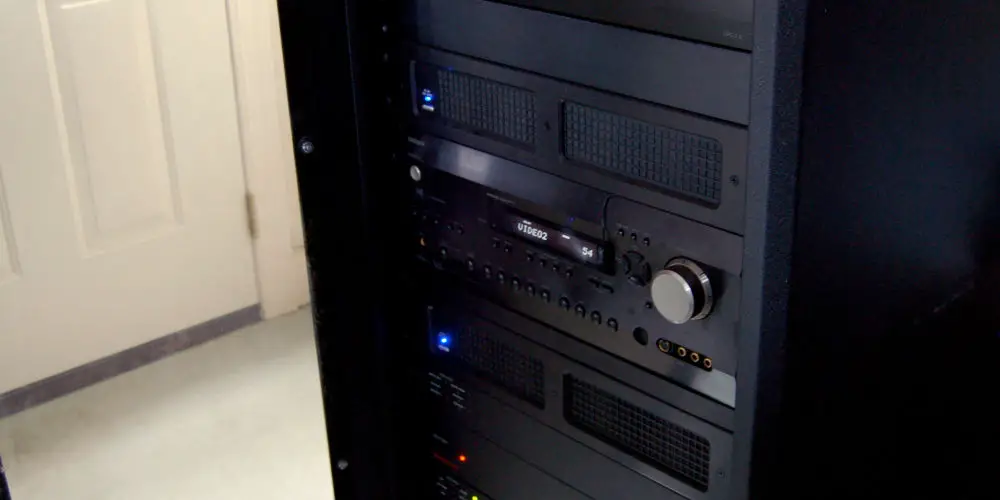
What rack types are available?
There are two types of racks to choose from Closed vs Open-Frame. Both will allow you to safely store your AV equipment. You’ll have easy access to individual components either via the front or back of the rack, passive cooling, and cable and wire management.
Let’s explore each of these options in more detail.
Closed frame rack
Pros:
With a fully welded frame, enclosed racks can hold more weight. They offer good security as side panels are fixed and often include locking doors. So, they help keep your expensive equipment secured.
An enclosed cabinet helps keep dust particles away and protects equipment from water or condensation. They can offer a more flexible cooling system with active and passive airflow control.
Cons:
Unfortunately, enclosed racks offer limited access to the equipment. The shape and weight of these racks is much larger than open racks.
Open-frame
Pros:
Typically more economical, open-frame racks give you about the same size rack as an enclosed-frame model for less money. You’ll get a sturdy rack frame with open access to all components.
Cons:
There is little security and no realistic options for thermal management. So, you’ll need to ensure the room can satisfy those needs.
They aren’t as attractive when loaded, so are ideal for storing in a cupboard as long as it offers adequate cooling.
As the rack is open to the external environment, dust will build up quicker.
Finding the ideal rack layout
As a large frame, you’re able to customise the layout of your rack, according to what equipment you have and your future plans. Here are a few recommendations for the layout of your AV equipment on a rack:
- It’s best to place all equipment with antennas at the top
- Group similar equipment to minimize the interconnect length.
- Check the “Power Distribution Unit” is within cabling distance to the mains plug, ideally without daisy-chaining power or using extension cables
- Focus on locating user-accessible equipment at eye level
- Position exhaust fan directly above high heat equipment
- Place heavier equipment at the bottom
- Ensure equipment or wires don’t protrude past the back of the rack
- Leave a blank space at the bottom of the rack to allow easy access without removing any of the other equipment.
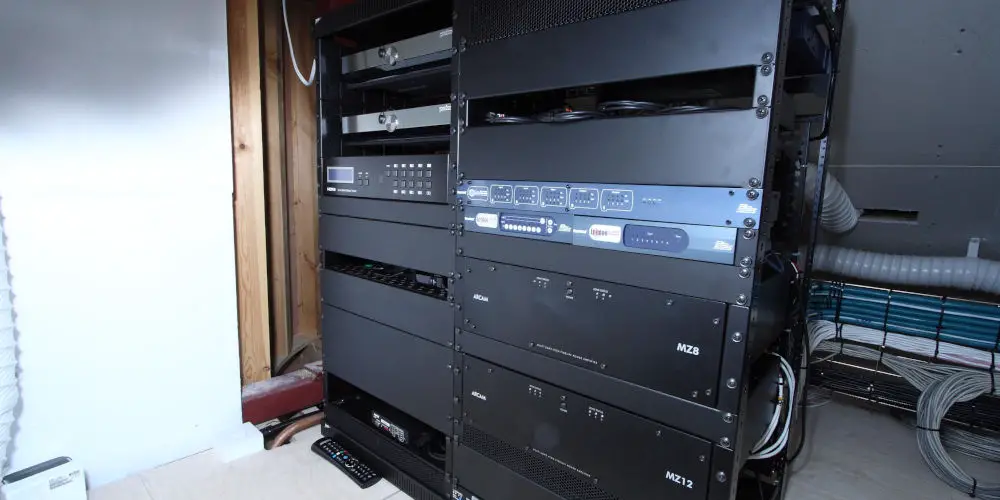
Consider ventilation
With your rack equipment, it’s important your rack allows ventilation or has a ventilation system built in. Ideally, your rack should live in a conditioned space that’s designed to keep the equipment cool and avoid problems caused by overheating.
You want an air intake near the bottom and an exhaust vent near the top of the rack. Any rack-mounted fans should align with the vent’s holes to provide the best cooling.
When including audio amplifiers in the rack, be aware that they create a lot of heat. So, these devices may require additional rack space around them to facilitate heat removal.
We recommend placing the devices that produce a lot of heat near the top of the rack. Doing so ensures that heat isn’t passed to the other equipment.
If a device produces excessive heat and can’t be mounted at the top of the rack, we recommend placing a fan directly in the rack unit above the device.
Cable management
An element often overlooked when building an AV rack for a home cinema room is cable management. A clean-looking rack has good AV cable management, which ensures wires don’t tangle and become a messy situation.
Getting cables organised and correctly secured is worth the time and effort. It will ensure your cables and equipment last longer, and make fault finder easier.
You can purchase vertical lacing strips very affordably. These allow you to group and secure the cables with small velcro strips or zip ties. Correct cable management in your rack setup allows you clear access to the rear panel of equipment.
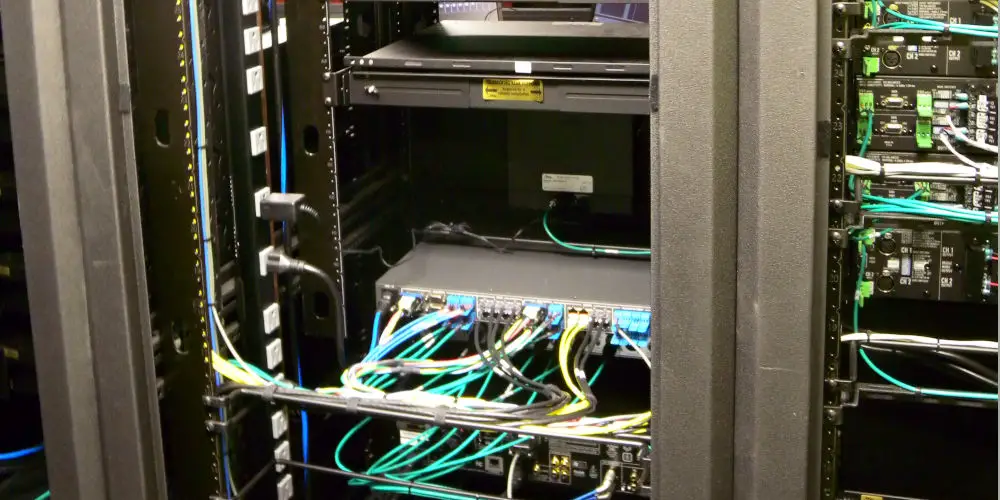
What will my AV rack cost?
Adding up all of the items involved in building an AV rack can make you regret wanting on in the first place. And while they might be a little more expensive than you might have expected, they are worth it.
Depending on the manufacturer, an 18U Frame will cost between £500 and £800. A larger 42U Frame costs around £700 to £1,200. And this is before you add any equipment.
Building your AV rack
Now you know what is an AV rack, you can make a more informed buying decision. The process will be much easier!
It’s worth buying your rack from either a specialist home cinema installer or AV shop. They can help you to find and build the ideal rack.




